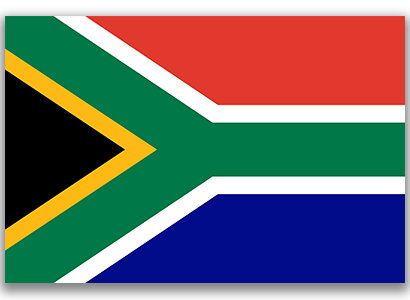The flag is considered to be the symbol or identity of the country, there are 195 countries in this world and each country has its own identity and they are identified by its different flags.
But do you know why these flags are made of different colors, what do their color and the symbol made in them say? Here today we are going to tell you about some such countries and their flags which include Red Blue Green White Black and Yellow (Gold) colors. Flags have long been used as a representation of places and natives, & the thought that goes into their plan goes far beyond just choosing matching colors & images. Their meanings frequently exemplify the values, history, and ethical standing of the places or persons they represent.
Color Symbolism in Flags
Colors within flags differ from nation to nation and state to state; the colors presented hold deep-seated meanings and symbols.
- Black: The color black is often considered a sign of determination; it is also used to represent the ethnic heritage and/or the defeat of enemies. However, it can also sometimes be used as a symbol of death or mourning.
- White: White is a symbol of peace, purity, and harmony. It is also used to represent surrender in times of war.
- Red: The red color is considered to be a symbol of power, revolution, vivacity, and war (a symbol of bloodshed), in other words, it is seen for courage and dominance, at some places it can also be seen as a warning of danger.
- Blue: Blue is a symbol of determination, it is also considered a symbol of freedom, vigilance, and good luck.
- Green: Green is considered to be an agricultural influence as well as a symbol of prosperity and fertility. It is also recognized as youth and hope.
- Yellow (or Gold): Has long been viewed as a sign of prosperity and power, as in the sun. It can also be used to represent joy.
Here are Countries with Red Blue Green White Black and Yellow (Gold) Flags
Slovenia
The official name of Slovenia (SVN) is the Republic of Slovenia & consists of Black, Red, Green, White, Blue & Gold flag colors. The Slovenian flag consists of three equivalent horizontal strips. Its top band is white, middle blue, and bottom red stripe. In the center of the white & blue stripes, on the left side of the flag, is the country’s coat of arms, consisting of three points of Mount Triglav – the top mountain in Slovenia, two blue stripes & 3 five-pointed yellow stars.
The 3 stars in this flag are inspired by the independence of Slovenia and the army of the Duke of Slovenia, Celje, which dates back to the 15th century. The three stars were inspired by the independence of Slovenia and the army of the Duke of Slovenia, Celje, which dates back to the 15th century. The wavy blue stripes on the arm represent the major rivers of the country. Blue, white and red are the traditional colors of Panslavism. They were first accepted by the Slavic countries in the mid-19th century & were inclined by the Russian flag because Russia was an independent Slavic nation. The colors that represent Slavic unity & independence are on several flags & can be seen on the flag of several Slavic nations.
History of the Slovenia Flag
The Slovenian flag was brought into existence on 7 June 1991. It was revealed in 1848 by Slovenian nationalists choosing the colors white, blue & red, while Slovenia was part of the Austro-Hungarian Empire. With the fall down of the Austro-Hungarian Empire following World War I, Slovenia united with new Slavic countries in 1918 to form a single unity, Yugoslavia. Slovenia got independence from Yugoslavia in 1992.
Following Slovenian independence from Yugoslavia, the red star was detached & added a fresh coat of arms designed by Marko Pogačnik. The flag was publicly accepted on 27 June 1991 after a long and contentious debate on the emblem of the innovative republic.
South Africa
The South African flag has equivalent-sized horizontal lines with a red top & blue bottom.
These blue and red lines are alienated by a green Y-shaped tape with thin white stripes around them. On the left side of the flag is a black triangle surrounded by a lean yellow strip.
Although colors don’t have an official meaning, black, green & yellow colors point out Nelson Mandela’s supporting party, while the red, white & blue colors are also found in the African National Congress & the old Boer Republics flags.
The South African flag was encouraged by the colors & meanings of the previous South African flags:
- The red color = blood flowing in conflict
- Blue = sky
- Green = the land of the nation
- Black = Black people in Africa
- White = European people
- Yellow = Symbolizes gold from usual sources
History of the South African Flag
The South African road was discovered by the Europeans in the 16th century, after which they started invading it in the 17th century.
During the 18th century, the population of Europeans continued to increase in an uncontrolled way.
In 1909, the representatives of the camp were gathered to form a legitimate union & the South African Union was created on May 31, 1910.
South Sudan (SSD)
South Sudan (SSD) or you can say the Republic of South Sudan its flag includes Black, red, green, blue, yellow, and white colors. The capital town of South Sudan is Juba. South Sudan has a total approximate population as of 2021 is 11,384,393 or 11.4 M based on 22 states and 17 cities. Independence Day is celebrated on July 9, 2011, & John Garang is the founder of South Sudan.
Their flag was earlier used by the People’s Liberation Army / Movement of Sudan. The flag is highlighted as the flag of Kenya; the outline is similar to the flag of Sudan. It is supposed that the black color in the flag symbolizes the people of South Sudan, the white one signifies peace, the red color is the drop of blood for freedom, the green color represents the land & the blue color shows the waters of the Nile. Before freedom in 2011 South Sudan was a piece of Sudan.
The initial flag fluctuating in this land was the Ottoman Empire Flag. The Ottoman state, recognized as the Khedivate of Egypt, enclosed the current area of Egypt & Sudan. The forested flag used in this age consisted of a white crescent on the red ground & three white stars. It can be supposed that it was the one-star version of the existing Turkish Flag.










